Abstract
There is great public concern, often based on anecdotal reports, about risks from ionising radiation. Recent interest has been directed at an excess of leukaemia cases in the locality of civil nuclear installations at Sellafield and Sizewell, and epidemiologists have a duty to pursue such information vigorously. This paper sets out to show that the epidemiological methods most commonly used can be improved upon. When analysing geographical data it is necessary to consider location. The most obvious quantification of location is ranked distance, though other measures which may be more meaningful in relation to aetiology may be substituted. A test based on distance ranks, the "Poisson maximum test", depends on the maximum of observed relative risk in regions of increasing size, but with significance level adjusted for selection. Applying this test to data from Sellafield and Sizewell shows that the excess of leukaemia incidence observed at Seascale, near Sellafield, is not an artefact due to data selection by region, and that the excess probably results from a genuine, if as yet unidentified cause (there being little evidence of any other locational association once the Seascale cases have been removed). So far as Sizewell is concerned, geographical proximity to the nuclear power station does not seem particularly important.
Full text
PDF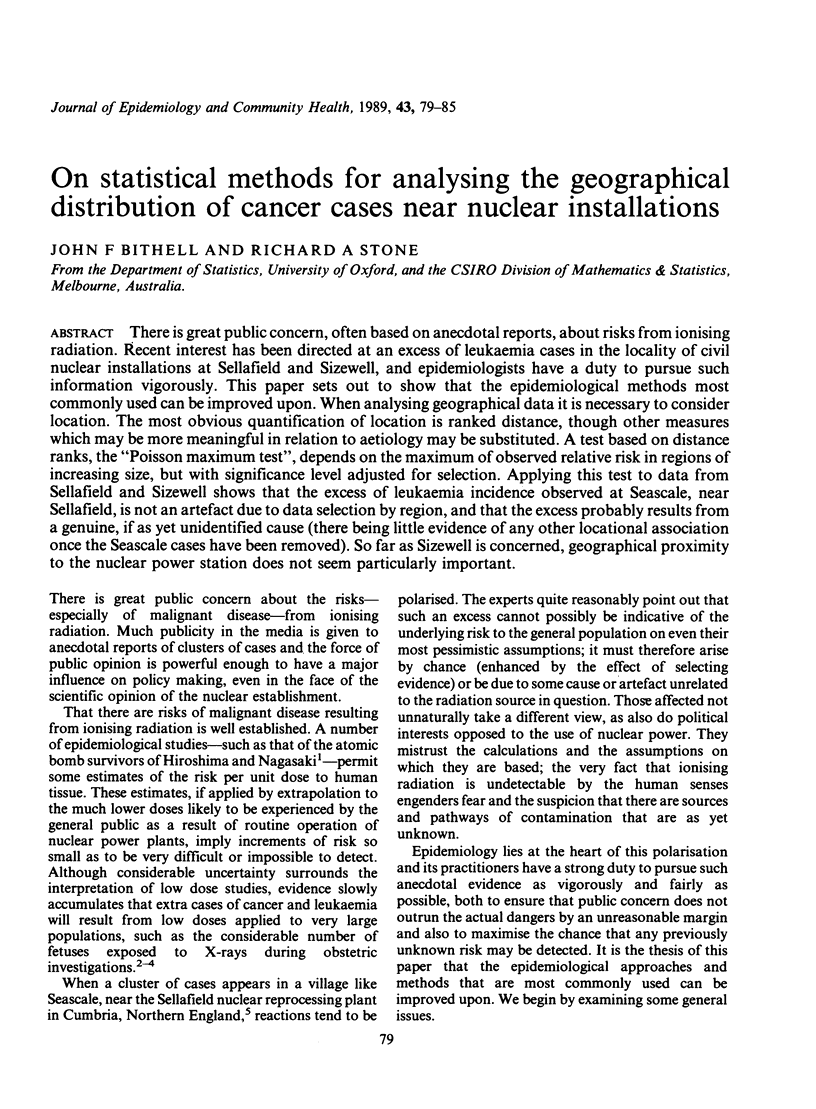
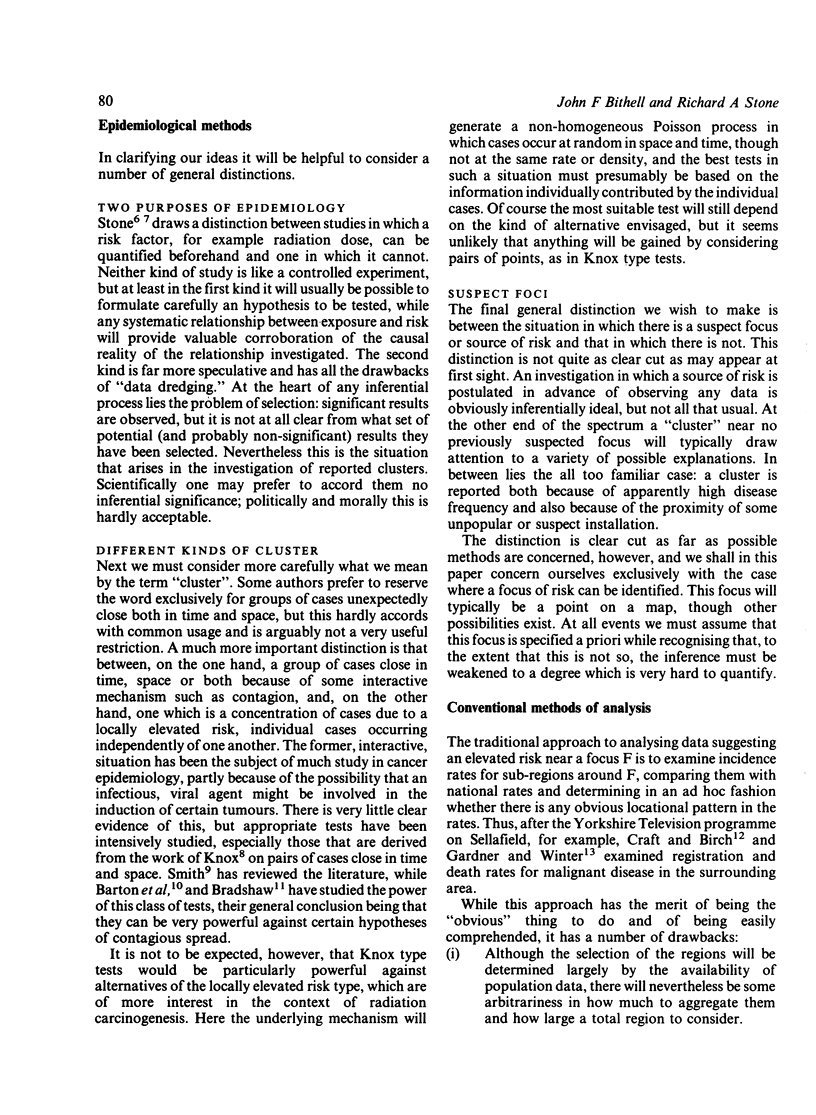
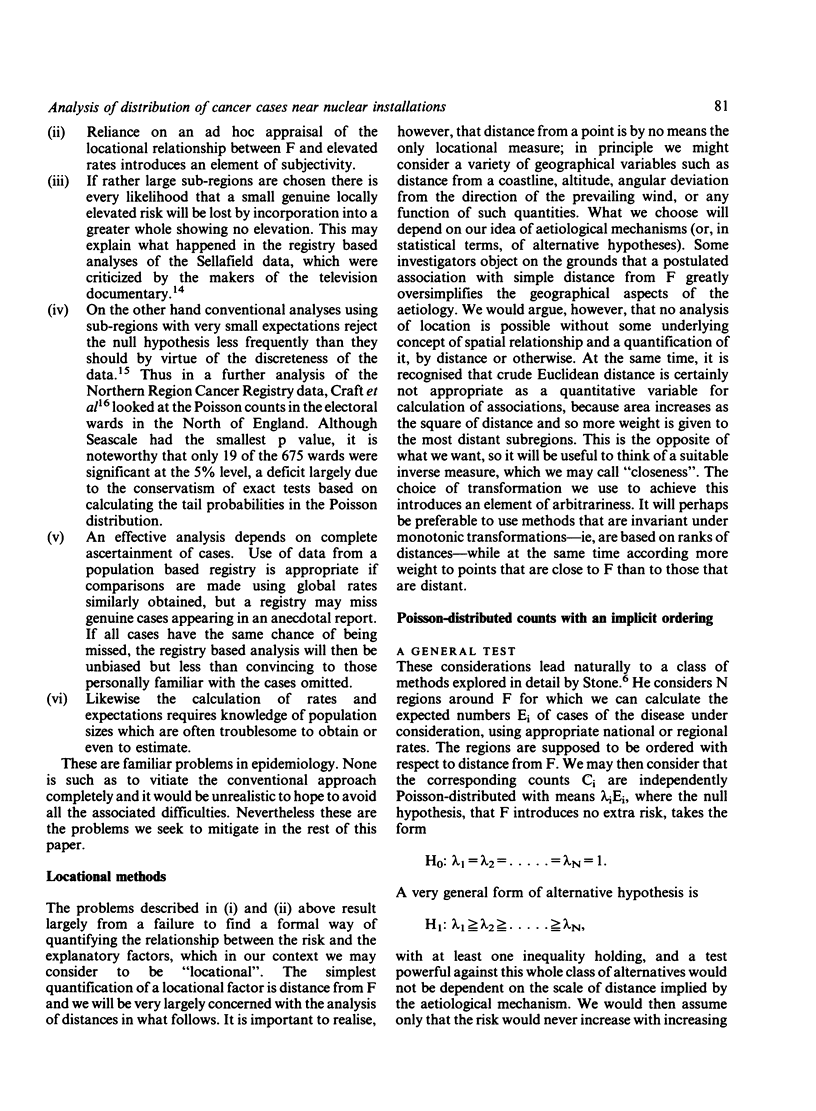
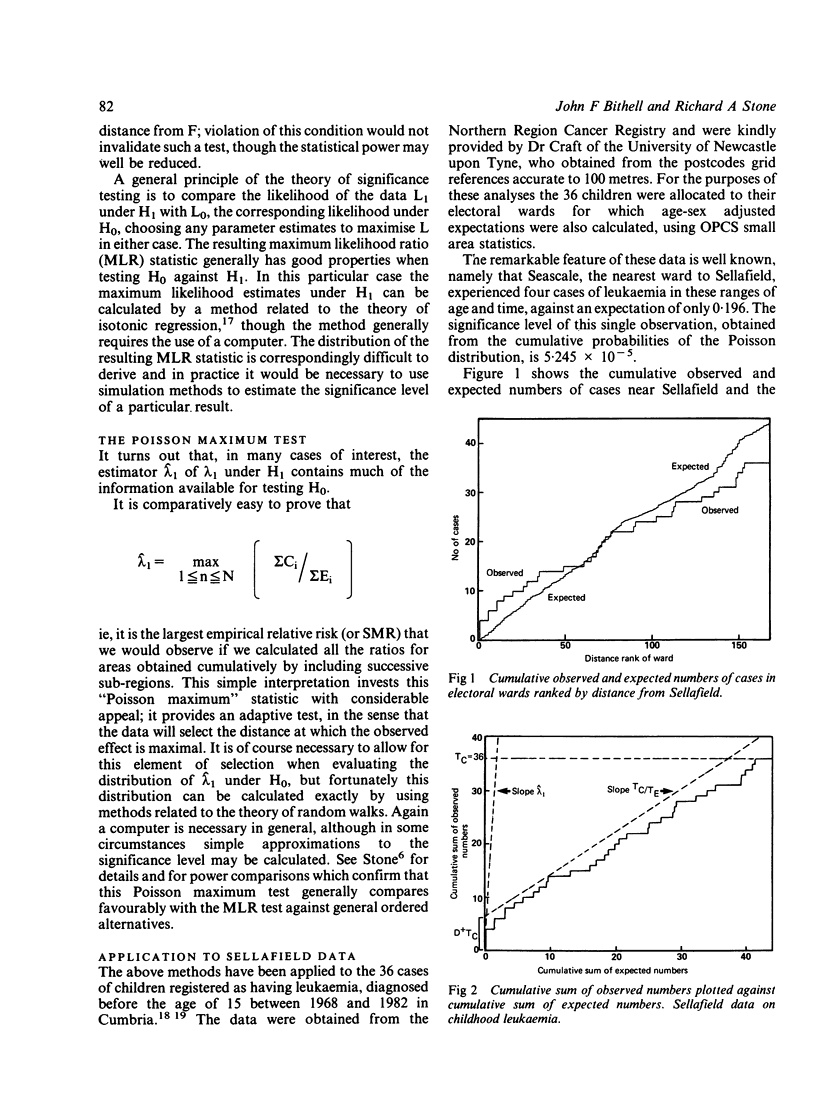
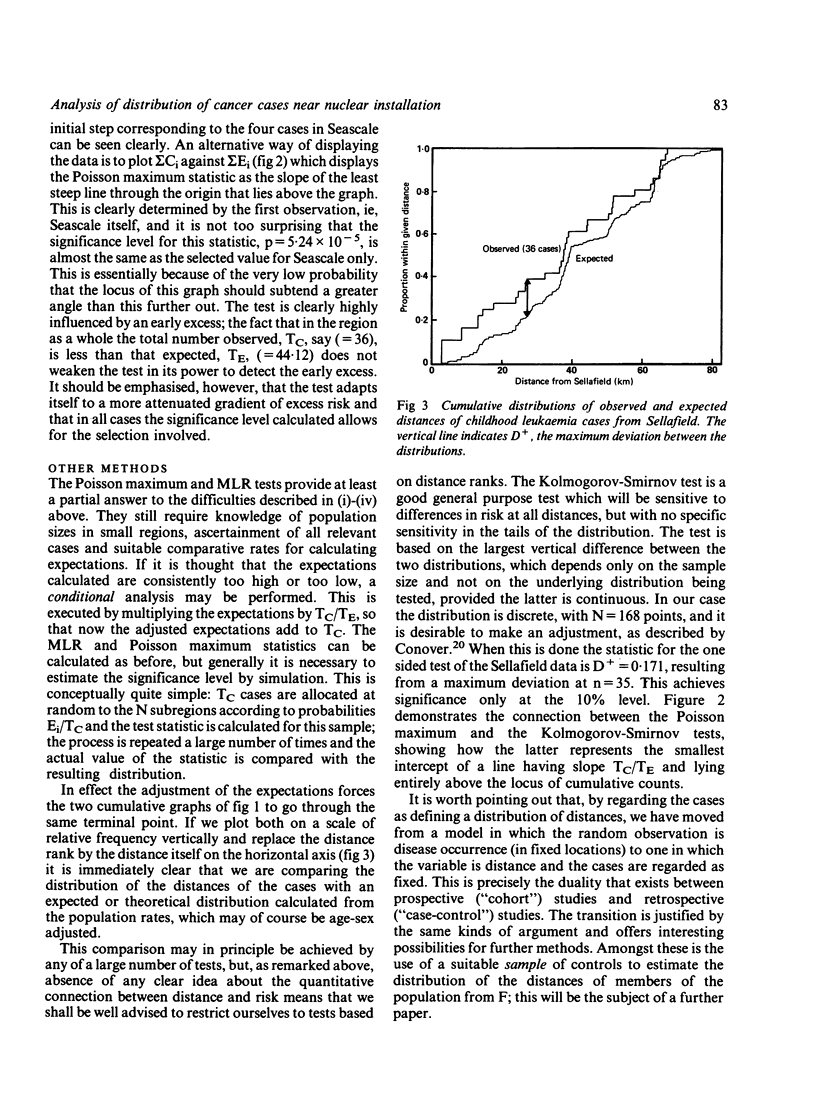
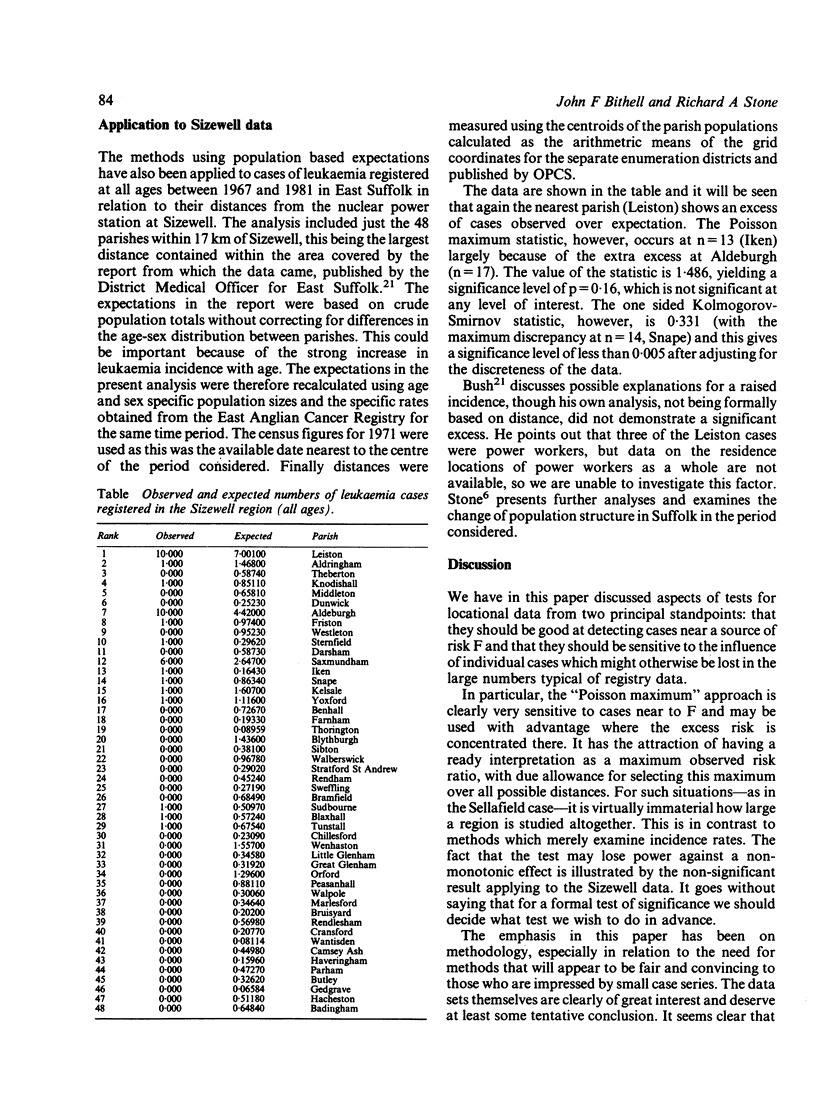
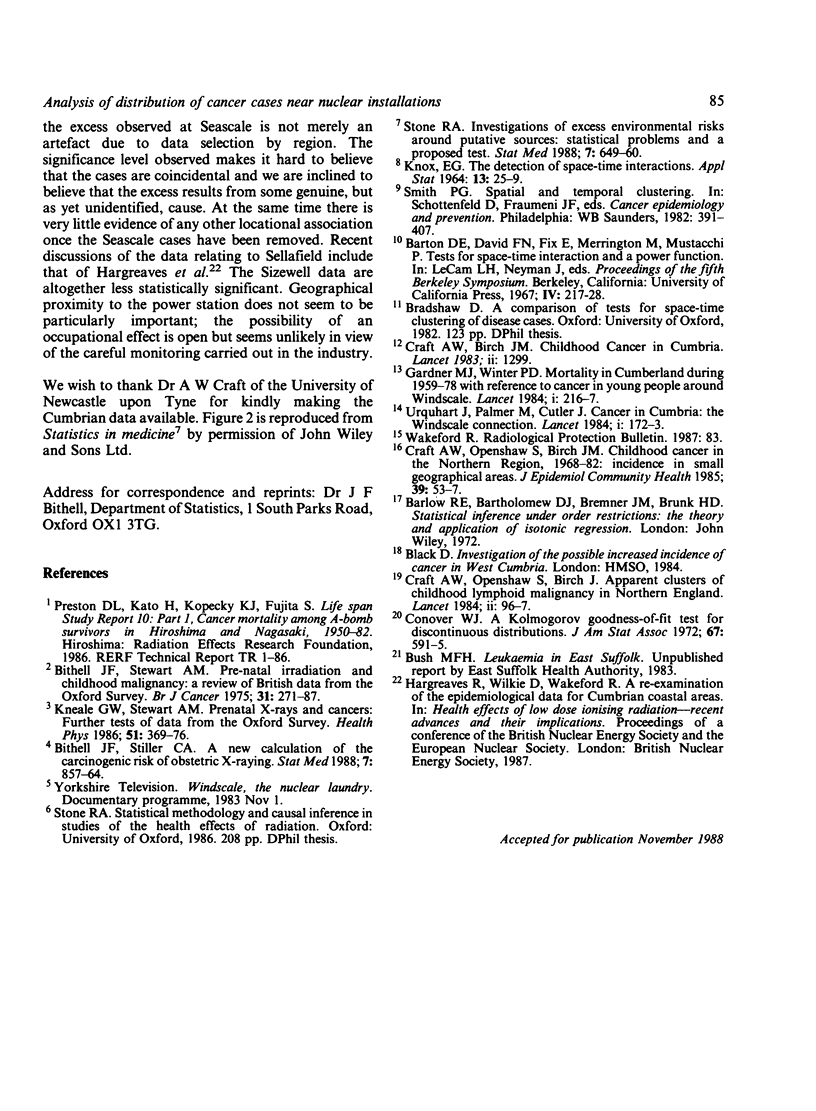
Selected References
These references are in PubMed. This may not be the complete list of references from this article.
- Bithell J. F., Stewart A. M. Pre-natal irradiation and childhood malignancy: a review of British data from the Oxford Survey. Br J Cancer. 1975 Mar;31(3):271–287. doi: 10.1038/bjc.1975.62. [DOI] [PMC free article] [PubMed] [Google Scholar]
- Bithell J. F., Stiller C. A. A new calculation of the carcinogenic risk of obstetric X-raying. Stat Med. 1988 Aug;7(8):857–864. doi: 10.1002/sim.4780070804. [DOI] [PubMed] [Google Scholar]
- Craft A. W., Birch J. M. Childhood cancer in Cumbria. Lancet. 1983 Dec 3;2(8362):1299–1299. doi: 10.1016/s0140-6736(83)91166-2. [DOI] [PubMed] [Google Scholar]
- Craft A. W., Openshaw S., Birch J. M. Childhood cancer in the Northern Region, 1968-82: incidence in small geographical areas. J Epidemiol Community Health. 1985 Mar;39(1):53–57. doi: 10.1136/jech.39.1.53. [DOI] [PMC free article] [PubMed] [Google Scholar]
- Craft A. W., Openshaw S., Birch J. Apparent clusters of childhood lymphoid malignancy in Northern England. Lancet. 1984 Jul 14;2(8394):96–97. doi: 10.1016/s0140-6736(84)90260-5. [DOI] [PubMed] [Google Scholar]
- Gardner M. J., Winter P. D. Mortality in Cumberland during 1959-78 with reference to cancer in young people around Windscale. Lancet. 1984 Jan 28;1(8370):216–217. doi: 10.1016/s0140-6736(84)92131-7. [DOI] [PubMed] [Google Scholar]
- Kneale G. W., Stewart A. M. Prenatal x rays and cancers: further tests of data from the Oxford Survey of Childhood Cancers. Health Phys. 1986 Sep;51(3):369–376. [PubMed] [Google Scholar]
- Stone R. A. Investigations of excess environmental risks around putative sources: statistical problems and a proposed test. Stat Med. 1988 Jun;7(6):649–660. doi: 10.1002/sim.4780070604. [DOI] [PubMed] [Google Scholar]


